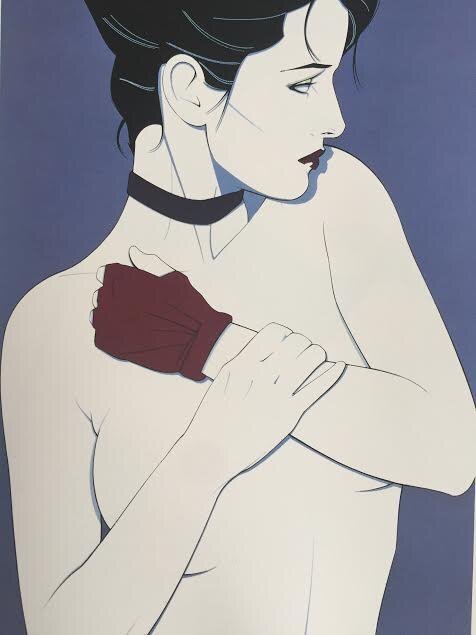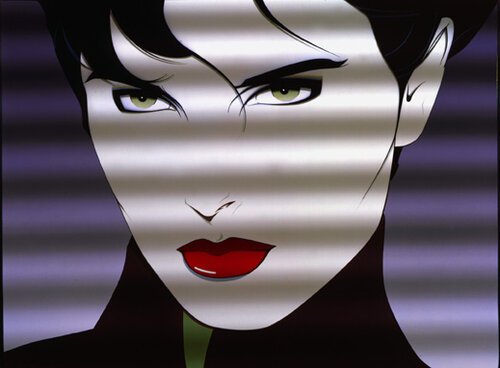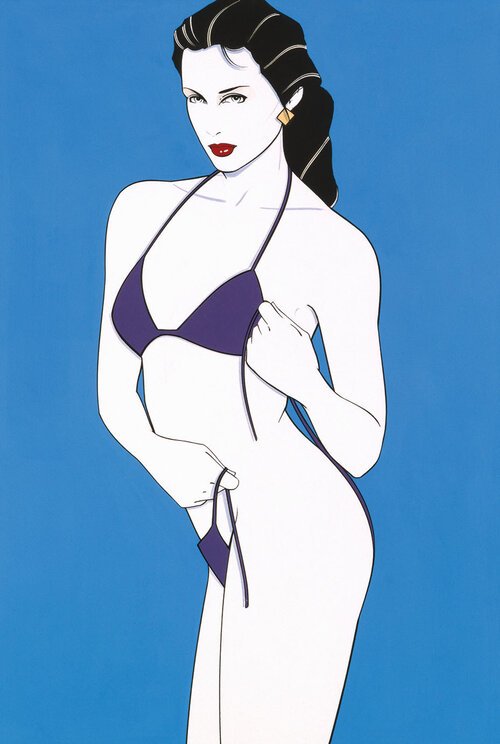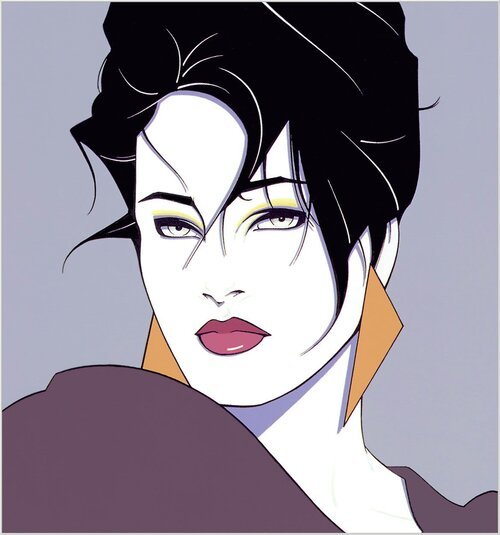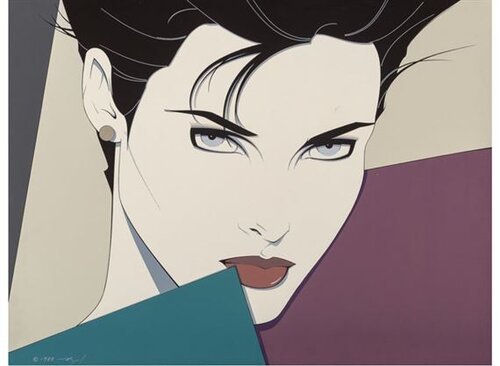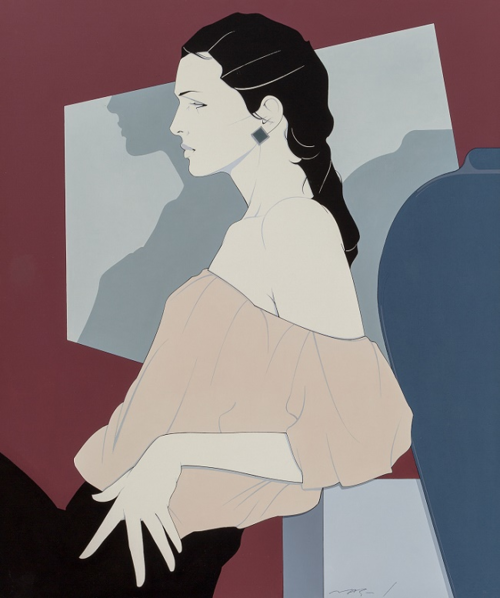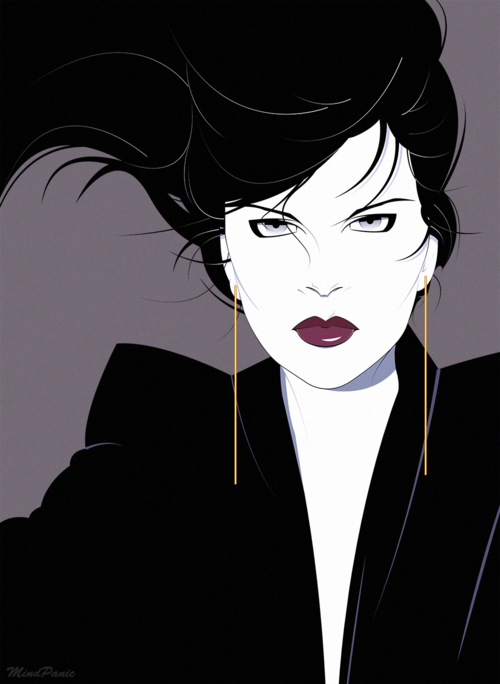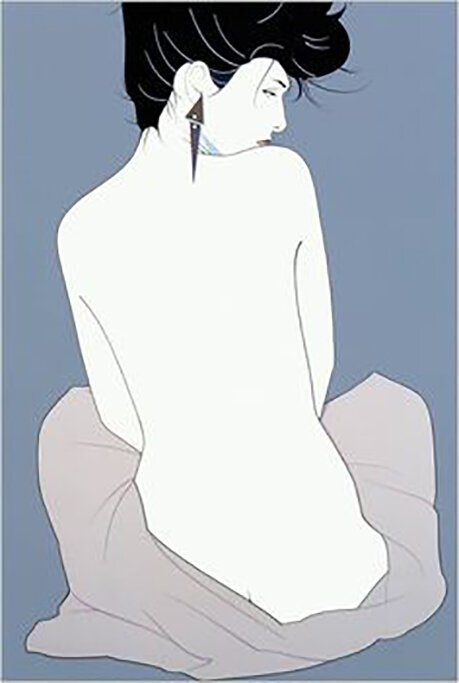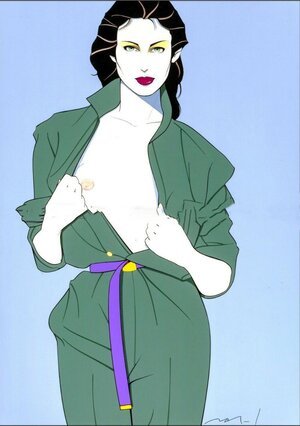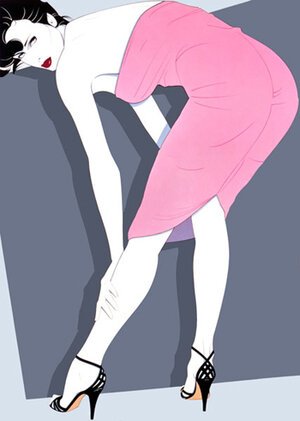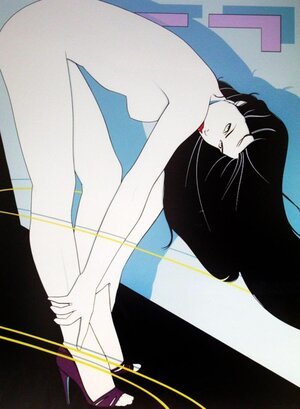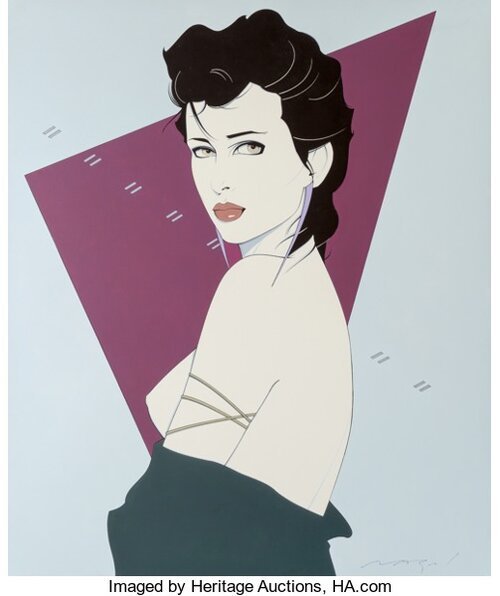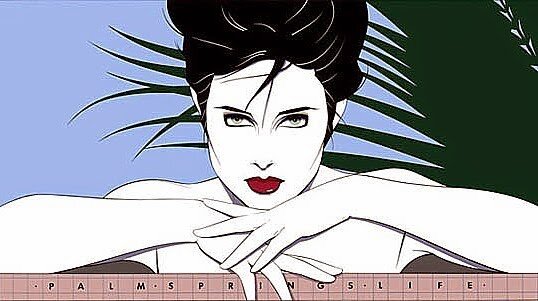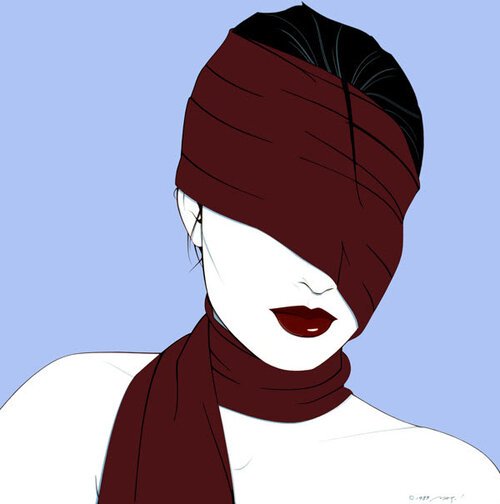Monday Muse: Patrick Nagel
I often find myself looking through my art books, fantasizing about the abstract expressionism of the 1950s, the techno-primitive counterculture of the 1960s, or the glam over-the-top 1970s. I rarely ever wax nostalgic about the 1980s. I guess the loud prints, big hair, rampant consumerism, and the Reagan presidency just don’t do it for me.
However, there is one artist who I’ve been drawn to throughout the years, one who I feel embodies the 1980s almost completely. That artist is Patrick Nagel.
Nagel rose to recognition through his ten years’ worth of illustrations for Playboy magazine. His work has been featured on album covers and a slew of commercial clients from Intel to Lucky Strike cigarettes. You wouldn’t say Nagel is known for his variety. He paints the same black and white woman in every painting. She is flattened, quite literally two dimensional. The only sense of depth we get is from her sharp cheekbones. She often looks out with piercing eyes, heavily lined in the 1980s style. She wouldn’t be out of place in Robert Palmer’s iconic Addicted to Love video. In fact, Nagel’s most famous artwork is his cover for Duran Duran’s 1982 album Rio.
The Rio album cover is one of the few Nagel illustrations to feature a smile. There is something alluring, mysterious, and a bit sinister in the smile. The dark lips and lined eyes add to the intensity, along with the signature stark white skin and black hair. Nagel always portrays his models with a windswept hairstyle, giving movement to the otherwise flat and static figure.
Some think of the 80s and think of Day-Glo colors and loud prints, but I feel Nagel’s restrained palette of muted tones really captures the sophisticated minimalism that can be found in certain recesses of 80s style and design. The clothes the model wears (when she’s wearing any at all) are quintessential 80s: big earrings, oversized coats, shoulder pads, and body con dresses. I’m not particularly drawn to the loud prints and crimped hair of 80s fashion, but I’d love to dress up as a Nagel girl in some vintage Yves Saint Laurent.
Of course, the Nagel pieces aren’t the most progressive art around. They feature an idealized (white) woman performing for the male gaze. She remains submissive in all pieces, even when she exhibits a certain type of power. However, there is also something strong about a woman embracing her sexuality and the Nagel illustrations convey that sense of strength, mystery, and at times irreverence well.
For this week’s art challenge I want to challenge us to create a piece of art using Nagel’s signature muted color palette but working to refute the male gaze of his work. This could be creating your own Nagel woman, doing a self-portrait in Nagel’s style, creating a more dynamic sense of the woman rather than just a flat representation. You could also write from the point of view of the Nagel woman. What is she thinking? What is her story? I’m so excited to see what you create.
The 1980s were a prime time for objectifying women’s bodies and creating art that upholds the male gaze. I think Nagel falls into this category, you could even say he is genre-defining. However, there is just something about his work that appeals (through sex, through color, through line, through its graphic nature) even as it feels quite dated now. The pieces aren’t timeless, but rather so well capture a time in American art and popular culture.
